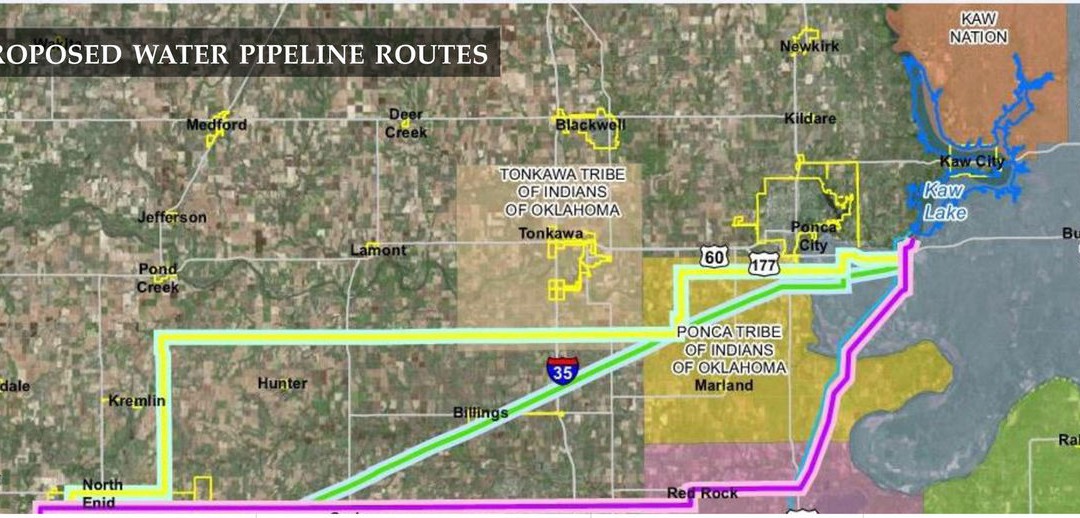Enid residents have approved a sales tax increase to fund a water pipeline from Kaw Lake.
Preliminary election results Tuesday show the proposition for a new three-quarter percent tax, and the extension of an existing one-quarter percent tax passed 4,304-1,994, or 68.34 percent, in favor.
“I am pleased the sales tax issue passed, and city staff is already working on the next phase,” City Manager Jerald Gilbert said, adding a summary of Phase I of the Kaw Lake project, and an initial overview of Phase 2 will be presented at the Enid City Commission meeting Sept. 8. “Solving our long-term water issues is of the utmost importance for the long-term prosperity of Enid. I want to thank the voters for their support, and assure them the city will be working very hard to bring the pipeline to completion in the next six to seven years.”
Ernie Currier, sales tax campaign chairman, was pleased with the outcome Tuesday night.
“Obviously I’m excited. I’m excited that through our presentations, the citizens were able to see the need that we were representing. The information was there, and the information, I think, is what sold itself,” he said. “I think that Enid sees itself as a progressive community, and I think that, obviously, our neighbors and friends will be better served with this new water proposal. I love our community.”
The tax will be in effect until 2052.
Studies on the water issue have been conducted since December 2006, when the water master plan was initiated, Gilbert said. More than $1 million has been spent on multiple studies — in an effort to secure the future of water for the next 50 years — to conclude the pipeline is the best option.
With a price tag of around $360 million, the project includes the pipeline, pump stations, storage areas, a water treatment plant and intake structures, city officials said. Officials have said the project will take five to seven years to complete. Enid is about one year into studies, and about two years away from beginning pipeline construction.
Chris Gdanski, Enid director of engineering, previously noted levels of lakes in western Oklahoma were down for the past four or five years, while Kaw Lake levels remained at 100 percent or greater.
City officials had considered building a lake to supply Enid’s water, but determined the pipeline from Kaw Lake was a better approach. A study found the biggest problem with building a lake is local rainfall is not sufficient to quickly fill it, Gdanski said.
“You invest the money, you build a lake and then you’ve got to wait for it to fill up. That’s when we started to realize that 70 miles of pipeline is expensive — yes, we completely understand that — but the Kaw Lake water level stays above 95 percent and has for decades. It has been very stable,” Gdanski said.
Currently, Enid gets its drinking water from wells west of the city.
However, increased usage from the aquifer, including by other municipalities and agriculture, has been problematic. Data provided by the city shows water depths continue to go down in the well fields. Water levels between 2000 — before the recent drought — and 2015, have declined in every well field, Currier said.
He said the Ames well field is basically the city’s No. 1 well field, with good wells and water. In 2000, the top of the water was 17 to 18 feet below the Ames wells, he said. In 2015, the water was 33 feet below.
Written by: Jessica Miller with Enid News & Eagle


